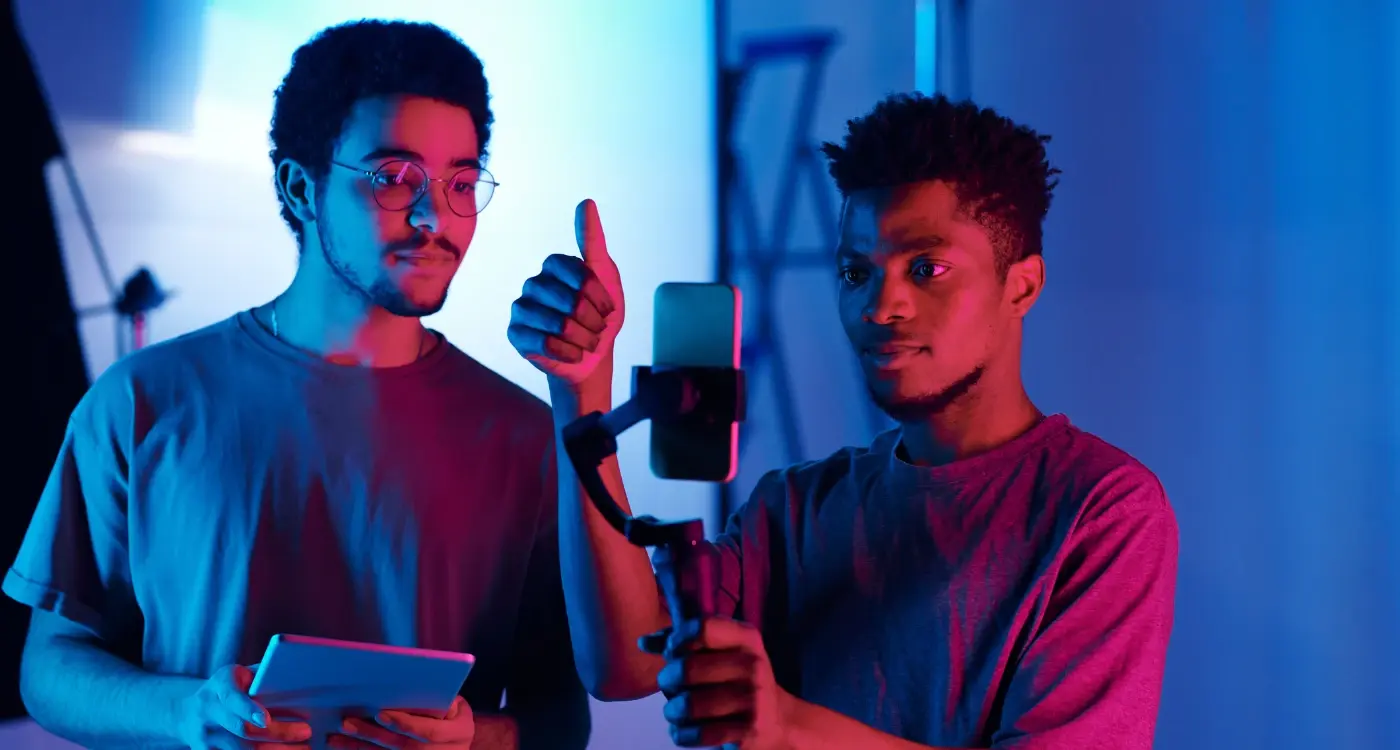How Much Does Influencer Marketing Cost For Mobile Apps?
Every single day, millions of people scroll through their phones, and somewhere in that endless stream of content, there's an app being promoted that could change everything for its creators. The influencer marketing industry is now worth over £13 billion globally, and mobile apps are fighting harder than ever for their slice of this massive pie. But here's what catches most app developers off guard—the cost of influencer marketing varies so wildly that you could spend £100 or £100,000 and still not know if you're getting good value.
When I first started working with app clients on their marketing strategies, I was shocked by how little they understood about influencer pricing. They'd come to me with budgets that were either laughably small or unnecessarily huge, with no real understanding of what different types of influencers actually charge. The truth is, influencer marketing for mobile apps isn't just about finding someone with lots of followers—it's about understanding the complex web of factors that determine pricing and, more importantly, results.
The biggest mistake app developers make is thinking that influencer marketing cost is just about follower count—it's actually about engagement, audience quality, and campaign strategy
This guide will walk you through everything you need to know about influencer marketing costs for mobile apps. We'll explore different types of campaigns, how your app category affects pricing, and most importantly, how to avoid the costly mistakes that can drain your marketing budget faster than you can say "swipe up to download".
What Is Influencer Marketing for Mobile Apps
Influencer marketing for mobile apps is when app developers work with popular social media personalities to promote their applications to their followers. These influencers—whether they're YouTubers, Instagram stars, or TikTok creators—share your app with their audience in exchange for payment or other benefits.
The concept is straightforward: instead of running traditional adverts, you partner with someone who already has the attention of your target users. When a gaming influencer shows off your new puzzle app during their stream, their viewers are more likely to download it than if they saw a generic banner ad. It's about trust and connection—people follow influencers they like and often take their recommendations seriously.
How It Works for Mobile Apps
App influencer marketing typically involves sponsored posts, app reviews, gameplay videos, or integration into the influencer's regular content. A fitness influencer might demonstrate your workout app during their morning routine, whilst a tech reviewer could create an in-depth video explaining your app's features.
The beauty of this approach is that it feels natural; good influencers weave your app into their content in a way that doesn't feel forced or overly promotional. They're essentially introducing your app to their community as they would recommend it to a friend—and that personal touch can be incredibly powerful for driving downloads and user engagement.
Types of Influencer Marketing and Their Costs
When it comes to promoting your mobile app through influencers, you've got several different paths to choose from—and each comes with its own price tag. The most common approach is sponsored posts, where influencers create content featuring your app in exchange for payment. These typically cost between £100-£1,000 for micro-influencers (1K-100K followers) and can jump to £5,000-£50,000 for macro-influencers with millions of followers.
Story takeovers are another popular option that tends to be more affordable since the content disappears after 24 hours. You're looking at roughly 30-50% less than permanent posts. Then there's affiliate marketing, where influencers earn commission based on app downloads or in-app purchases—this can be brilliant for mobile app marketing because you only pay when you see results.
Long-term Partnerships vs One-off Campaigns
Brand ambassadorships offer better value for money if you're planning ongoing social media marketing efforts. Instead of paying premium rates for individual posts, you can negotiate monthly retainers that work out cheaper per piece of content. Most influencers prefer this approach too since it gives them steady income.
Start with micro-influencers who genuinely use apps similar to yours—their engaged audiences convert better than celebrity followers who might not even be interested in mobile apps.
The key is matching your marketing cost budget to your goals. Quick awareness campaigns might suit one-off posts, whilst building long-term brand recognition benefits from sustained partnerships.
How App Category Affects Influencer Marketing Prices
After working with countless app developers over the years, I've noticed that many are shocked when they discover how much app category affects influencer pricing. Gaming apps, for instance, typically pay premium rates because the competition is fierce and the audience is highly engaged. Meanwhile, productivity apps often get better deals since influencers find them easier to authentically recommend.
The reason behind these price differences comes down to audience value and conversion rates. Finance apps command higher prices because their users have disposable income—influencers know this and price accordingly. Dating apps face similar premium pricing, but for different reasons; they're competing for attention in a crowded market where users are notoriously fickle.
Category-Specific Pricing Patterns
- Gaming apps: £500-£2,000 per 10k followers (high engagement rates)
- Finance apps: £400-£1,800 per 10k followers (valuable audience)
- Health & fitness: £300-£1,200 per 10k followers (lifestyle content)
- Productivity apps: £200-£800 per 10k followers (broader appeal)
- Educational apps: £150-£600 per 10k followers (niche but loyal)
What's interesting is that some categories get bonus points for being "Instagram-friendly." Food delivery apps, for example, create natural content opportunities that influencers love—nobody questions why someone's showing off their lunch! This organic fit often translates to better rates and more authentic partnerships.
Measuring Return on Investment for App Influencer Campaigns
Right, so you've spent your marketing budget on influencer campaigns for your mobile app—now what? The big question everyone asks is whether it actually worked. I'll be honest with you: measuring ROI for influencer marketing isn't as straightforward as checking your Google Ads dashboard, but it's definitely doable if you know what to look for.
Track Downloads and User Actions
The most obvious metric is app downloads. Use unique promo codes or tracking links for each influencer so you can see exactly which posts drove installs. But here's the thing—downloads are just the start. You need to track what happens after people install your app. Are they actually using it? Are they making purchases? Are they sticking around past the first week?
The real value of influencer marketing for mobile apps isn't just in the immediate downloads, but in the long-term users who genuinely engage with your product
Calculate Long-Term Value
This is where it gets interesting. A single influencer post might generate 500 downloads, but if 50 of those users become paying customers over six months, that's your real ROI. Social media marketing works differently for mobile apps because user lifetime value can be substantial. Track retention rates, in-app purchases, and subscription conversions to get the full picture of your campaign's success.
Budgeting Strategies for Mobile App Influencer Marketing
Setting a realistic budget for influencer marketing isn't just about picking a number—it's about making sure every pound works hard for your app. I've seen too many app developers throw money at influencers without a proper plan, only to watch their budgets disappear faster than free samples at a trade show.
Start with your total marketing budget and allocate 20-30% to influencer campaigns if you're just getting started. This gives you room to test different approaches without risking everything on one strategy. Remember, you'll need money for other marketing channels too.
Budget Allocation Framework
Think of your influencer budget like a pyramid. Spend 60% on micro-influencers (they often deliver better engagement rates), 30% on mid-tier creators, and 10% on macro-influencers for brand awareness. This spread maximises your reach whilst keeping costs manageable.
Cost Management Tips
- Track cost per install (CPI) for each influencer to identify top performers
- Negotiate package deals for multiple posts rather than one-off campaigns
- Set aside 15% of your budget for unexpected opportunities or campaign extensions
- Use performance-based pricing when possible—pay for results, not just exposure
- Test small campaigns first before committing to larger partnerships
The key is starting small, measuring everything, and scaling what works. Your budget should evolve as you learn which influencers drive the best results for your specific app.
Common Pricing Mistakes That Waste Your Marketing Budget
After working with countless mobile app developers over the years, I've seen the same pricing mistakes happen again and again. The most common one? Choosing influencers based purely on follower count. I get it—big numbers look impressive, but they don't always translate to app downloads or user engagement.
Many app developers fall into the trap of working with mega-influencers who charge thousands but have audiences that couldn't care less about mobile apps. A gaming influencer with 50,000 engaged followers will deliver better results for your gaming app than a lifestyle influencer with 500,000 followers who've never mentioned apps.
Budget Allocation Errors
Another mistake I see constantly is putting all your marketing cost into one campaign. Spread your social media marketing budget across multiple smaller campaigns with different influencers. This approach helps you test what works before committing serious money.
Always negotiate usage rights upfront. Many brands forget to secure rights to reuse influencer content, missing out on valuable assets for future campaigns.
Common Pricing Pitfalls
- Paying premium rates for influencers outside your app category
- Not factoring in content creation costs beyond the posting fee
- Ignoring engagement rates when evaluating influencer pricing
- Failing to negotiate package deals for multiple posts
- Overlooking micro-influencers who offer better value
The key is finding the sweet spot between cost and relevance. Your mobile app deserves targeted promotion, not just expensive exposure.
Conclusion
After working with mobile app clients for years, I've seen too many brilliant apps fail because they didn't understand influencer marketing costs properly. The truth is, there's no magic number that works for everyone—your gaming app will have different requirements than a productivity tool, and a micro-influencer campaign will behave completely differently than working with someone who has millions of followers.
What I've learned is that successful app influencer marketing comes down to three things: knowing your numbers, testing small first, and being realistic about what you can achieve. Don't expect overnight success from your first campaign. Most of my clients who see real results from influencer marketing treat it like a long-term investment rather than a quick fix.
The biggest mistake I see? Apps that either spend too little and wonder why nothing happens, or spend their entire budget on one big influencer without testing different approaches first. Start with smaller campaigns, measure everything carefully, and scale up what works. Your app deserves marketing that actually delivers results—not just impressive follower counts that don't convert into downloads.
Remember, the best influencer marketing strategy is the one that fits your specific app, audience, and budget. Use the frameworks we've covered, but adapt them to your unique situation. That's where real success happens.
Share this
Subscribe To Our Learning Centre
You May Also Like
These Related Guides

How Much Should I Budget For Social Media Marketing For My App?

How Do I Create Engaging Video Content For My App On TikTok And Instagram?



